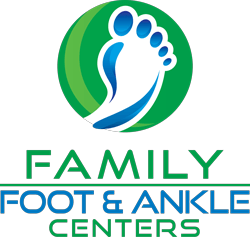All About Bunionectomies
A bunionectomy is a surgical procedure that is used to remove a bunion and bring the big toe (and any other affected structures in the foot) back into proper alignment. During the surgery, anesthesia is used to numb your foot. The surgeon then makes one or more incisions near the bunion to remove extra bone or tissue, realign the bones, or straighten the toe. In some cases, the toe joint may be operated on to rebuild or repair it. Bunionectomies are typically outpatient procedures, which means that you will get to go home the same day as your surgery. You may be given a toe spacer, post-surgical shoe, or mobility device to help hold your foot in the right position and keep weight off of it while you heal. It can take several months to fully recover. To learn more about bunion surgery and to find out if it’s the right treatment for you, please speak with a podiatrist.
If you are suffering from bunion pain, contact one of our podiatrists of Family Foot & Ankle Centers. Our doctors can provide the care you need to keep you pain-free and on your feet.
What Is a Bunion?
Bunions are painful bony bumps that usually develop on the inside of the foot at the joint of the big toe. As the deformity increases over time, it may become painful to walk and wear shoes. Women are more likely to exacerbate existing bunions since they often wear tight, narrow shoes that shift their toes together. Bunion pain can be relieved by wearing wider shoes with enough room for the toes.
Causes
- Genetics – some people inherit feet that are more prone to bunion development
- Inflammatory Conditions – rheumatoid arthritis and polio may cause bunion development
Symptoms
- Redness and inflammation
- Pain and tenderness
- Callus or corns on the bump
- Restricted motion in the big toe
In order to diagnose your bunion, your podiatrist may ask about your medical history, symptoms, and general health. Your doctor might also order an x-ray to take a closer look at your feet. Nonsurgical treatment options include orthotics, padding, icing, changes in footwear, and medication. If nonsurgical treatments don’t alleviate your bunion pain, surgery may be necessary.
If you have any questions, please feel free to contact one of our offices located in Corsicana, Ennis, and Waxahachie, TX . We offer the newest diagnostic and treatment technologies for all your foot care needs.
The information provided in this article is not meant to be medical advice and is for educational purposes only. If you would like to learn more about topics related to podiatry, feel free to contact Family Foot & Ankle Centers by clicking here or calling 972-597-4132 to reach our Waxahachie office, 903-872-9910 to reach our Corsicana office, or 972-875-3668 to reach our Ennis office.




